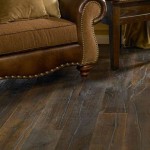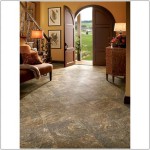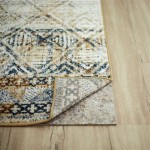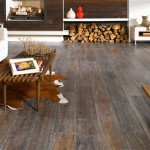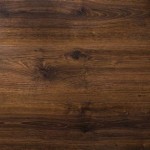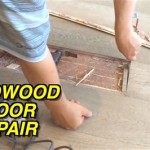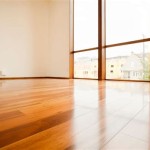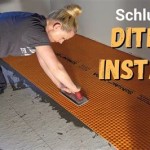Can You Use Carpet Tape On Wood Floors? Understanding the Implications
The question of whether carpet tape can be used on wood floors is a common one, especially for individuals looking to secure rugs and carpets without causing damage. While carpet tape offers a seemingly convenient solution for preventing slips and keeping floor coverings in place, its interaction with wood surfaces requires careful consideration. The composition of carpet tape, the nature of wood finishes, and the intended duration of application all play crucial roles in determining the suitability of this adhesive for use on wood floors. Incorrect application or removal can lead to unwanted results, potentially damaging the wood itself or leaving behind unsightly residue.
The primary function of carpet tape is to adhere carpets and rugs to various flooring surfaces. This tape typically consists of a strong adhesive on both sides, often supported by a fabric or film carrier. The adhesive may be made from rubber-based compounds, acrylic polymers, or other synthetic materials, each possessing different bonding strengths and residue characteristics. These adhesives are designed to create a robust bond capable of withstanding foot traffic and the weight of the carpet. However, this high bonding strength also presents a potential risk to the finish and integrity of wood floors.
Wood floors, whether hardwood or engineered, are typically finished with a protective coating such as polyurethane, varnish, or oil-based finishes. These finishes provide a barrier against moisture, wear, and scratches. The interaction between the carpet tape's adhesive and this finish is a key factor determining the outcome. Some adhesives may chemically react with the finish, causing discoloration, softening, or even removal of the protective layer. Furthermore, the porous nature of wood can allow the adhesive to penetrate the surface, making removal difficult and leaving behind a sticky residue that attracts dirt and debris.
Before proceeding with the application of carpet tape on wood floors, a thorough understanding of the potential risks and mitigations is essential. It's crucial to evaluate factors such as the type of wood finish, the composition of the carpet tape, and the intended duration of use. Proper preparation and careful removal techniques can significantly reduce the risk of damage. In some cases, alternative methods of securing carpets and rugs may be more suitable and less likely to cause harm to the wood floor.
Understanding the Types of Carpet Tape and Their Adhesives
Carpet tape is not a monolithic product; it encompasses a range of types, each differing in construction and adhesive composition. Single-sided carpet tape is designed for affixing carpet edges or seams, typically to a subfloor or tack strip, and is less relevant to the discussion of use on finished wood floors. Double-sided carpet tape, the type most commonly considered for securing rugs to wood floors, is available in various strengths and materials. The adhesive component is the critical factor when evaluating its suitability for use on wood.
Rubber-based adhesives are often found in general-purpose carpet tapes. They provide a strong, immediate bond and are relatively inexpensive to manufacture. However, they can be prone to drying out over time, leaving behind a sticky residue that is difficult to remove. Furthermore, some rubber-based adhesives can react with certain wood finishes, causing discoloration or softening of the finish.
Acrylic adhesives are another common type used in carpet tape. They tend to be more resistant to aging and UV degradation compared to rubber-based adhesives. Acrylic adhesives generally offer a more controlled bond, making them potentially easier to remove without leaving excessive residue. However, their initial tack may be lower than that of rubber-based adhesives, requiring more pressure and time to achieve a secure bond.
Specialty carpet tapes featuring modified acrylic or silicone adhesives are sometimes marketed as being safe for use on delicate surfaces, including wood floors. These tapes often have a lower initial tack and are designed to be removed cleanly without leaving residue or damaging the underlying finish. However, it's crucial to verify these claims and test the tape in an inconspicuous area before applying it to a larger area of the wood floor.
The carrier material of the carpet tape also plays a role in its overall performance and ease of removal. Fabric-reinforced tapes tend to be stronger and more resistant to tearing, but they can also be more difficult to remove cleanly. Film-backed tapes, made from materials like polyethylene or polypropylene, can be more flexible and easier to remove, but they may not offer the same level of strength and durability.
Potential Damage to Wood Floors from Carpet Tape
The use of carpet tape on wood floors carries several potential risks, stemming primarily from the adhesive's interaction with the wood finish and the wood itself. These risks range from superficial cosmetic damage to more severe issues that require professional repair.
One common problem is residue buildup. Over time, the adhesive in carpet tape can break down, leaving behind a sticky, gummy residue on the wood floor. This residue attracts dirt and debris, creating unsightly stains and making the floor difficult to clean. The residue can be particularly stubborn to remove, often requiring specialized cleaning solutions and considerable effort.
Another risk is the discoloration of the wood finish. Certain adhesives can chemically react with the finish, causing it to yellow, darken, or otherwise change color. This discoloration can be permanent and may require refinishing the affected area to restore the original appearance. The type of wood finish and the specific adhesive used are key factors in determining the likelihood and severity of discoloration.
In some cases, the adhesive can actually strip away or damage the wood finish. This is more likely to occur with stronger adhesives or when the tape is left in place for an extended period. The adhesive can weaken the bond between the finish and the wood, causing it to peel, flake, or chip off. This type of damage can be particularly noticeable and may require professional repair to restore the floor's surface.
Even more severely, if moisture becomes trapped under the carpet tape, it can lead to water damage and potentially warping or swelling of the wood floor. This is especially problematic as wood expands and contracts with changes in humidity. Trapped moisture can also promote mold growth, leading to further damage and potential health concerns.
It's important to note that the likelihood and severity of these types of damage can vary significantly depending on the specific carpet tape used, the type of wood floor finish, and the environmental conditions. Testing the tape in an inconspicuous area before applying it to a larger area is crucial to identify potential problems early on.
Alternatives to Carpet Tape for Securing Rugs on Wood Floors
Given the potential risks associated with using carpet tape on wood floors, exploring alternative methods for securing rugs and carpets is often advisable. Several options offer a safer and more effective way to prevent slips and keep floor coverings in place without damaging the wood surface.
Rug pads designed specifically for use on hard surfaces are a popular alternative. These pads are typically made from materials such as felt, rubber, or a combination of both. They provide cushioning and prevent the rug from sliding without relying on aggressive adhesives. Rug pads are available in various sizes and thicknesses to accommodate different rug types and floor conditions. Choose pads labeled "safe for hardwood floors" to minimize risks.
Non-slip rug grips are another option. These are typically made from silicone or rubber and are designed to adhere to both the rug and the floor, preventing movement. They are often smaller and less bulky than rug pads, making them suitable for use in tight spaces or under smaller rugs. It's crucial to select rug grips that are specifically designed for use on wood floors and that are labeled as being non-staining and non-damaging.
Furniture placement can also help secure rugs and prevent them from sliding. Placing heavy furniture, such as sofas, chairs, or tables, partially on the rug can help hold it in place and prevent it from moving. This approach is particularly effective for larger rugs and in areas with minimal foot traffic.
Another approach involves the use of rug anchors or corner stickers. These are small, adhesive-backed pieces that attach to the corners of the rug and help prevent it from curling or slipping. While they do use adhesive, they are typically designed to be less aggressive than carpet tape and are easier to remove without leaving residue. However, as with any adhesive product, it's essential to test them in an inconspicuous area first.
Finally, consider professional rug installation. A qualified flooring installer can employ techniques that secure rugs to wood floors without causing damage. This might involve using specialized tacks or fasteners that are hidden beneath the rug or employing a combination of rug pads and strategic furniture placement.

Pros And Cons Of Applying Rug Tape On Your Floors Carpets Rugpadusa

Easy Ways To Get Rid Of Carpet Tape On Wooden Floors Or Stairs Floor Sanding

Downsides That May Make You Reconsider Using Rug Tape On Wood Floors

Types Features And Specific Uses Of Carpet Tape

Types Features And Specific Uses Of Carpet Tape

Primens Double Sided Carpet Tape Review Stop Slipping Rugs On Hardwoods Laminates Tile Linoleum

How To Install Carpet Tiles Step By All Flooring Now

Safetypro 2 Pack Double Sided Carpet Tape Rug Grippers For Area Rugs Pad And Hardwood Floors Heavy Duty Stickers Grip With Strong

How To Remove Double Sided Carpet Tape Hometalk

12 Pcs Rug Tape Reusable Washable Carpet Double Sided Non Slip Pads For Hardwood Floors Stoppers Area Rugs Black
See Also
